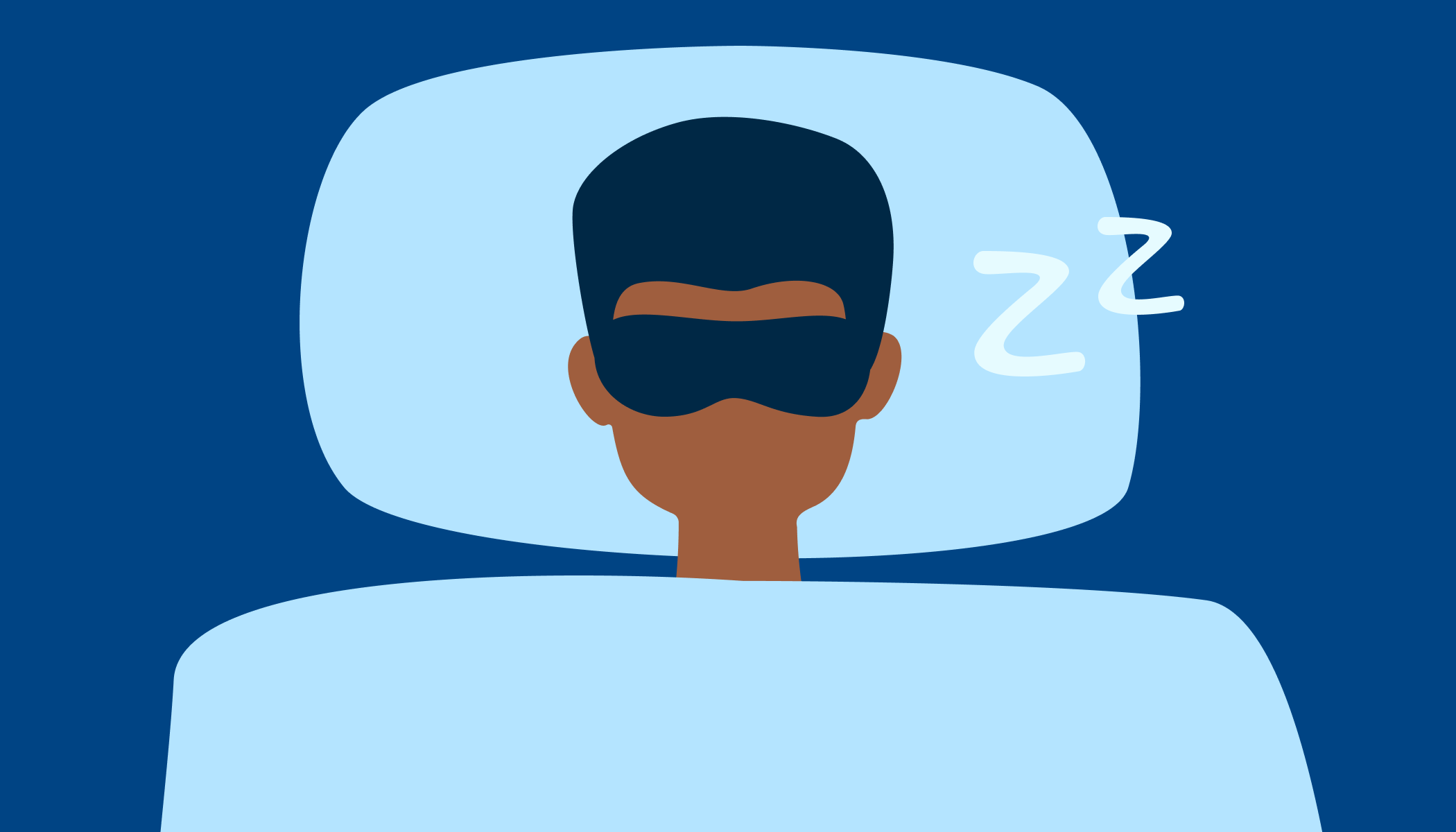The Sleep Puzzle: Navigating Special Challenges and Tailored Solutions for Children with Unique Needs

Parenting is a journey filled with twists, turns, and unique challenges, especially when it comes to fostering healthy sleep habits in children with special needs. In this article, we embark on a compassionate exploration of the sleep puzzle, delving into the challenges faced by families and offering tailored solutions to ensure restful nights for children with unique needs.
Understanding the Landscape: Sleep Challenges in Children with Special Needs
Diverse Special Needs: A Spectrum of Sleep Challenges
Children with special needs encompass a broad spectrum of conditions, including but not limited to autism spectrum disorders, ADHD, Down syndrome, cerebral palsy, and sensory processing disorders. Each condition brings its own set of challenges that can impact sleep patterns, making it crucial for parents to understand the specific needs of their child that is why sleep coach certification is important.
Autism Spectrum Disorders: Sensory Sensitivities and Routine Dependence
Children on the autism spectrum often experience challenges related to sensory sensitivities, making it difficult for them to settle into sleep. Routine dependence is common, and disruptions to established routines can lead to sleep difficulties.
ADHD: Hyperactivity and Restlessness
Children with Attention Deficit Hyperactivity Disorder (ADHD) may exhibit hyperactivity and restlessness, making it challenging for them to wind down at bedtime. ADHD medications can also impact sleep, adding an extra layer of complexity to the sleep puzzle.
Down Syndrome: Sleep Apnea and Low Muscle Tone
Down syndrome is associated with a higher prevalence of sleep apnea due to anatomical factors such as airway structure. Children with Down syndrome may also experience low muscle tone, contributing to challenges in maintaining a comfortable sleep posture.
Cerebral Palsy: Muscular Spasticity and Positioning
Muscular spasticity in children with cerebral palsy can affect their ability to find a comfortable sleeping position. Sleep disturbances may also be related to pain or discomfort associated with their condition.
Sensory Processing Disorders: Overstimulation and Sleep Disturbances
Children with sensory processing disorders may be highly sensitive to sensory stimuli, leading to overstimulation that can interfere with sleep. Creating a sensory-friendly sleep environment becomes crucial in addressing these challenges.
Sleep Disorders in Special Needs: Recognizing Red Flags
In addition to challenges associated with specific conditions, children with special needs may also be at a higher risk of developing sleep disorders. Recognizing red flags that indicate potential sleep disorders is essential for proactive intervention.
Sleep-Related Breathing Disorders: Addressing Apnea and Snoring
Children with special needs, particularly those with anatomical variations such as enlarged tonsils or adenoids, may be at a higher risk of sleep-related breathing disorders, including sleep apnea and snoring. Persistent snoring or pauses in breathing during sleep should prompt further evaluation.
Insomnia and Parasomnias: Identifying Sleep Disturbances
Insomnia, characterized by difficulty falling or staying asleep, and parasomnias, including night terrors or sleepwalking, can affect children with special needs. Identifying sleep disturbances and their potential impact on overall well-being is crucial for tailored interventions.
Navigating the Sleep Puzzle: Tailored Solutions for Children with Special Needs
Individualized Sleep Plans: A Blueprint for Success
One size does not fit all when it comes to sleep solutions for children with special needs. The foundation of success lies in the creation of individualized sleep plans that take into account the unique challenges and strengths of each child.
Collaborative Approach: Involving Healthcare Professionals
Developing an individualized sleep plan often involves a collaborative approach that includes input from healthcare professionals, including pediatricians, sleep specialists, and therapists. These experts can provide insights into the specific needs of the child and contribute to a comprehensive plan.
Parental Observations: Key Insights into Sleep Patterns
Parents play a vital role in the creation of individualized sleep plans by providing detailed observations of their child’s sleep patterns, behaviors, and preferences. These firsthand insights contribute to a holistic understanding of the child’s sleep needs.
Establishing Consistent Routines: Creating Predictability
Consistency is a cornerstone of healthy sleep habits, and for children with special needs, establishing predictable routines becomes even more crucial. Consistent bedtime and wake-up times, as well as a structured pre-sleep routine, provide a sense of security and help signal the body that it’s time to sleep.
Visual Schedules: Supporting Routine Dependence
Children with special needs, particularly those on the autism spectrum, often benefit from visual schedules that outline the sequence of bedtime activities. Visual cues support routine dependence and provide a clear roadmap for the bedtime routine.
Gradual Transitions: Easing Changes in Routine
Changes in routine can be challenging for children with special needs. Gradual transitions, whether introducing a new bedtime activity or adjusting the sleep schedule, help ease the child into changes, reducing stress and promoting a smoother bedtime routine.
Creating a Sensory-Friendly Sleep Environment: A Haven for Rest
Sensory considerations are paramount when designing a sleep environment for children with special needs. Tailoring the sleep space to accommodate sensory sensitivities contributes to a more comfortable and restful sleep experience.
Calming Colors and Lighting: A Soothing Atmosphere
Choosing calming colors and soft lighting in the bedroom creates a soothing atmosphere. Avoiding overly bright or stimulating colors supports relaxation and helps minimize sensory distractions.
Weighted Blankets and Comfort Items: Providing Comfort
Weighted blankets can provide a sense of comfort and security for children with special needs. Introducing comfort items, such as a favorite stuffed animal or cozy blanket, adds a familiar and reassuring element to the sleep environment.
Addressing Sensory Sensitivities: Minimizing Sleep Disruptions
Children with special needs may experience heightened sensory sensitivities that can disrupt sleep. Minimizing sensory disruptions involves identifying triggers and implementing strategies to create a sleep environment that minimizes discomfort.
White Noise Machines: Masking Environmental Sounds
White noise machines can be effective in masking environmental sounds that may disturb a child’s sleep. The consistent background noise provides a reassuring auditory backdrop that minimizes disruptions.
Blackout Curtains: Creating a Dark Sleep Space
Creating a dark sleep environment is particularly important for children with sensory sensitivities. Blackout curtains help block out external light, supporting the body’s natural production of melatonin and promoting better sleep quality.
Managing Sleep-Related Anxiety: Building a Safe Sleep Space
Children with special needs may experience anxiety related to sleep. Building a safe sleep space involves addressing anxieties through proactive measures and creating a sense of security.
Social Stories: Preparing for Bedtime
Social stories, personalized narratives that outline the steps of the bedtime routine, can help children with special needs understand and prepare for the upcoming sleep process. This visual tool supports a sense of predictability.
Transitional Objects: Comfort in Familiarity
Introducing transitional objects, such as a parent’s shirt or a favorite blanket, provides children with a tangible source of comfort. These objects can act as a bridge between wakefulness and sleep, easing the transition.
Sleep Hygiene Practices: Nurturing Healthy Habits
Promoting healthy sleep hygiene practices is essential for children with special needs. These practices include maintaining a consistent sleep schedule, creating a comfortable sleep environment, and implementing calming activities before bedtime.
Calming Activities: Wind-Down Rituals
Incorporating calming activities into the pre-sleep routine helps signal to the child that it’s time to wind down. Activities such as reading a book, listening to soft music, or engaging in gentle stretching promote relaxation.
Limiting Screen Time: Minimizing Stimuli
Excessive screen time, especially close to bedtime, can disrupt sleep patterns. Implementing screen time limits and creating a tech-free zone before sleep supports the body’s natural wind-down process.
Nutrition and Sleep: The Connection
The relationship between nutrition and sleep is significant for all children, and it takes on added importance for those with special needs. Understanding the impact of diet on sleep patterns allows parents to make informed choices that support overall well-being.
Balanced Diets: Supporting Physical Health
A balanced and nutritious diet contributes to physical well-being and can positively influence sleep quality. Ensuring that children receive a variety of nutrients through a well-rounded diet supports their overall health, including sleep.
Caffeine and Stimulant Awareness: Making Informed Choices
Children with special needs may be more sensitive to the effects of caffeine and stimulants. Monitoring their intake of caffeinated beverages and being aware of hidden stimulants in certain foods promotes better sleep hygiene.
The Role of Sleep Consultants: Expert Guidance for Tailored Solutions
When to Seek Professional Support
While many parents can implement strategies to address the sleep challenges of children with special needs, there are instances where seeking professional support becomes necessary. Understanding when to involve sleep consultants ensures access to expert guidance for tailored solutions.
Persistent Sleep Challenges: Seeking Expert Assessment
Persistent sleep challenges, such as ongoing difficulties with falling asleep, night waking, or frequent night terrors, may warrant expert assessment. Sleep consultants conduct comprehensive evaluations to identify underlying issues and create tailored sleep plans.
Specialized Expertise: Navigating Unique Needs
Children with special needs may benefit from the specialized expertise of sleep consultants who understand the unique challenges associated with various conditions. Working with professionals who have experience in this domain ensures a nuanced approach to sleep solutions.
Collaborative Approach: Integrating with Healthcare Providers
Sleep consultants often work collaboratively with healthcare providers, including pediatricians and therapists, to integrate sleep solutions with broader healthcare strategies. This collaborative approach ensures a comprehensive and well-coordinated approach to the child’s well-being.
Conclusion: Piecing Together a Restful Night for Every Child
Fostering healthy sleep habits in children with special needs requires a thoughtful and individualized approach that considers the unique landscape of each child’s condition. By understanding the specific challenges associated with diverse special needs, parents can piece together a sleep puzzle that promotes restful nights and overall well-being.
The journey of navigating sleep challenges becomes a collaborative effort, involving parents, healthcare professionals, and, when needed, sleep consultants. Through empathy, tailored solutions, and a commitment to creating sleep environments that nurture comfort and security, parents can provide their children with special needs the foundation for restful nights and thriving days.
In the mosaic of parenting, where every child is a unique piece, the quest for a restful night’s sleep becomes a heartfelt endeavor to ensure that each piece fits seamlessly into the beautiful tapestry of childhood and beyond.




